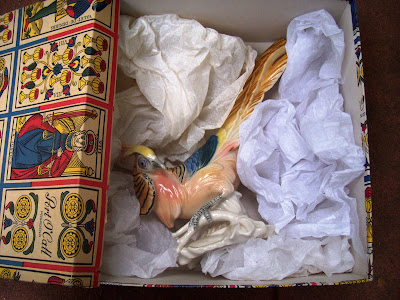
Here you have the before and after of the 1958 Washington Blvd. street widening. looking west from the intersection of Washington Blvd. and North Los Robles Ave., which was protested against by neighbors, unsuccessfully. As you can see, part of the front yards on the south side and north side were taken, along with the street trees (ever wondered why there are no stately palms along this stretch, like there are east of Lake Avenue?) The City did go to a lot of trouble to rebuild the stone retaining walls on the north side of Washington Blvd., we have to give them credit for that.

Here you have the before and after of the 1957 Washington Blvd. street widening, which appears to be taken looking west somewhere east? of the intersection of Washington Blvd. and Navarro Ave., with the absence of retaining walls and the slope downward. Let me know if you can find the location exactly. (Update: the row of palms on either side in the distance appears to be West Washington Street west of North Lincoln Avenue, so this picture in the foreground is likely a portion of Washington Blvd. looking west from about just east of Mentone Avenue, an area erased by the building of the Foothill Freeway through this stretch.)
Since the City of Pasadena has put Cordova Street on a "Road Diet", it seems like Washington Blvd. could use also the same "Road Diet" from El Molino Ave. west to Lincoln Ave. Let's give back the front yards and parkways and make this stretch of Washington Blvd. back into Washington Street and give more room for pedestrians, bicyclists and street trees. It really would improve the feel and look of the neighborhood and slow down traffic.
There were plans by the City, at one time, to widen North Los Robles Ave., North Fair Oaks Ave., North Marengo Ave., North Fair Oaks Ave., North El Molino Ave., etc. in the interest of improving "traffic circulation." Just recently, North Lake Ave. was widened just south of Walnut Ave. to facilitate a right turn lane! Notice how North El Molino widens just north of the freeway bridge, and how North Fair Oaks widens just north of the freeway.
Our friends in Altadena would like to see North Marengo narrowed north of Woodbury, a street that receives little traffic anyway (at least from the living....the Columbarium excepted) and the street could be narrowed and the resulting land on either side given back to the property owners for reconstituted front garden traffic buffering beauty zones.
What is possible? We probably should forget about widening freeways and streets, like the money wasting San Diego Freeway/Sepulveda Pass project starting this weekend, and go back to alternative ways of getting around. Let's try to get the City of Pasadena and L.A. County in Altadena to start putting many of our local streets on a "Road Diet" to fight street obesity! See you out on our widened tree shaded sidewalks.......































